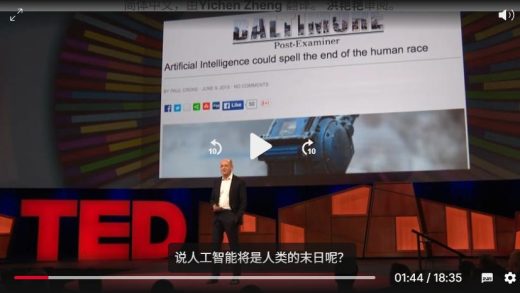Read More《养老院护工薪酬大涨,但依然招不到中年人》
Positive Comments: The Recovery of the Elderly Care Industry and the Upgrading of the Talent Structure Send Positive Signals
In the first half of 2025, the elderly care industry showed a remarkable trend of recovery and upgrading, which was particularly evident in the dynamics of the caregiver market. As can be seen from the news, the sales revenue of community-based elderly care services and institutional elderly care services increased by 30.4% and 22.6% year-on-year respectively. The total number of elderly care institutions and facilities nationwide doubled compared with 2019, reaching 406,000. These data not only confirm the rigid growth of elderly care demand in an aging society but also reflect the strong recovery of the industry after the setbacks of the pandemic.
The recovery of the industry has directly promoted a simultaneous increase in the quantity and price of caregiver positions. According to data from Zhaopin, in the second quarter of this year, the number of caregiver positions increased by 54% year-on-year, and the average monthly recruitment salary increased by 8% year-on-year. The demand for experienced caregivers was particularly strong. This dual growth in demand and salary is essentially a re – pricing of the value of elderly care services by the market. As the elderly’s care needs extend from “basic survival” to “quality of life”, caregivers with practical skills and the ability to handle complex needs have become the key support for the core competitiveness of institutions. For practitioners, the salary increase is not only an improvement in economic returns but also means that their professional value is recognized by society. For the industry, it is an important lever to attract talents and optimize service supply.
More notably, the “influx” of young caregivers has injected professionalism and innovative vitality into the industry. The news mentioned that the enthusiasm of fresh graduates majoring in elderly care to submit resumes has increased significantly. Vocational colleges have expanded their enrollment, and the number of students admitted to relevant majors has doubled. Most of the young caregivers recruited by institutions have bachelor’s or associate degrees, and the educational requirement has been upgraded from “mainly associate degree” to “24.7% with bachelor’s degree or above”. This change is highly consistent with the needs of the chain – style and standardized operation of elderly care institutions. The advantages of highly educated talents in logical thinking, learning ability, and the application of information technology tools can better meet the diversified needs of the elderly (such as health management, psychological counseling, and the use of smart devices) and the requirements of refined management in institutions (such as digital service records and standardized process implementation).
In addition, the career development path for young caregivers is gradually becoming clear. Some institutions have listed undergraduate graduates as key candidates for management cadres. The promotion channel from caregiver to nursing supervisor and then to deputy director, combined with the “distribution according to work” salary mechanism, provides long – term growth space for young people. This dual – track training model of “education + experience” not only meets the industry’s demand for professional theory but also improves service quality through practical experience, laying a talent foundation for the transformation of the elderly care industry from a “labor – intensive” to a “professional service – oriented” one.
Negative Comments: The Gap in Middle – aged Caregivers and the Imbalance of the Talent Structure Hide Hidden Worries
Although the industry shows a positive trend, the “gap crisis” of middle – aged caregivers (aged 30 – 50) is still a structural contradiction that cannot be ignored. The news mentioned that in low – and middle – end elderly care institutions in regions such as Beijing and Shanghai, the proportion of caregivers aged 50 – 60 is high, and it is extremely difficult to find caregivers aged 30 – 50, with a very high turnover rate. This gap not only affects the current service quality but may also hinder the inheritance of industry experience and the stable development of the industry.
From the supply side, the loss of middle – aged caregivers is essentially a concentrated manifestation of the lack of professional attractiveness. On the one hand, compared with adjacent industries such as housekeeping, the work intensity of caregivers is greater (requiring 24 – hour shifts and dealing with complex tasks such as caring for disabled elderly people), and the communication cost is higher (needing to deal with the emotional fluctuations of the elderly and the needs of their families), but the salary does not have a significant advantage. (The comprehensive monthly income of senior middle – aged caregivers in Beijing is about 7,000 – 8,000 yuan, similar to that of housekeepers). On the other hand, the middle – aged group (especially women) generally faces the conflict between family responsibilities (such as children’s education and elderly support) and career development. The social recognition of elderly care is relatively low (it is still regarded by some as a “servant” job), which further weakens the attractiveness of the position.
From the demand side, the rapid expansion of the number of elderly care institutions and the stricter regulatory standards have exacerbated the shortage of middle – aged caregivers. According to data from the Ministry of Civil Affairs, the number of elderly care institutions nationwide has doubled since 2019, while the supply of caregivers with more than 3 – 5 years of experience has not increased synchronously. At the same time, the strict requirements of regulations on the staffing ratio of caregivers (such as the ratio of disabled elderly people to caregivers) force institutions to “scramble for people”, further driving up the mobility cost of middle – aged caregivers. This contradiction between “explosive demand + short supply” may lead institutions to lower recruitment standards to meet compliance requirements or squeeze profit margins due to rising labor costs, ultimately affecting the stability of service quality.
The contradiction between the “easy recruitment” and “difficult retention” of young caregivers also needs to be vigilant. Although the expansion of college enrollment and employment pressure make it easier for institutions to recruit highly educated young people, the relatively low starting salary (the starting salary of fresh undergraduate/associate degree graduates in Beijing is 4,000 – 6,000 yuan per month, far lower than the average monthly salary of 18,717 yuan in non – private urban units) and the slow income growth under the “distribution according to work” system due to lack of early experience may weaken the professional identity of young people. In addition, although young caregivers have theoretical knowledge, they still need the experience guidance of middle – aged caregivers when facing complex scenarios such as caring for disabled elderly people and handling sudden health events. If there is a gap in middle – aged caregivers, it may lead to a “disconnect between theory and practice”, prolong the growth cycle of young talents, and even cause the risk of service accidents.
Suggestions for Entrepreneurs: Balance the Inter – generational Structure and Build a Sustainable Talent Ecosystem
In response to the opportunities and challenges in the current caregiver market of the elderly care industry, entrepreneurs can optimize their talent strategies in the following directions:
- Build an inter – generational cooperation mechanism of “seniors mentoring juniors”: The experience of middle – aged caregivers is irreplaceable “tacit knowledge”, and the theoretical and innovative abilities of young caregivers are the competitiveness of the future. Institutions can achieve experience inheritance through a “mentorship system” (for example, one senior middle – aged caregiver mentors 2 – 3 young caregivers), and at the same time, encourage young people to apply information technology tools (such as health monitoring systems and smart nursing equipment) in practice to form a service combination of “experience + technology”.
- Enhance the comprehensive attractiveness of caregiver positions: In addition to raising salaries, it is necessary to optimize from multiple dimensions such as working conditions, professional dignity, and social recognition. For example, set up a flexible scheduling system (such as allowing middle – aged caregivers to work in staggered shifts to take care of their families), provide nursing skills training and professional qualification certification (to enhance professional belonging), and publicize typical cases of caregivers through the media (such as the “Caregiver Star” selection) to reverse the prejudice of “servant work”.
- Differentially train young talents: For highly educated young caregivers, a dual – track development path of “professional line + management line” can be designed. The professional line focuses on the in – depth development of care technology (such as specialized care for disabled elderly people and intervention for dementia), and is matched with higher skill allowances. The management line focuses on team management and process optimization, reserving talents for promotion to positions such as nursing supervisor and director. At the same time, broaden the ability boundaries of young people through a “rotation system” (such as participating in positions such as evaluation, training, and communication with families) to shorten the growth cycle.
- Make good use of policies and resources to reduce costs: Actively apply for government subsidies for caregiver positions (500 yuan per month for junior caregivers and 1,000 yuan per month for senior caregivers) and incorporate them into the salary structure to enhance competitiveness. Cooperate with vocational colleges to carry out “order – based training” (such as targeted classes), lock in the student source in advance, and participate in curriculum design to ensure that talents match the needs of institutions. Introduce smart nursing equipment (such as transfer machines and automatic turning beds) to reduce work intensity and indirectly enhance the attractiveness of positions.
- Pay attention to the long – term supply – demand balance in the industry: When expanding the number of institutions, plan the caregiver reserve synchronously. For example, through the dual channels of “internal training + external introduction”, set up a talent plan of “reserving 10 caregivers six months in advance for every 100 new beds”. Establish a warning mechanism for caregiver turnover (such as monitoring the turnover rate and satisfaction of employees aged 30 – 50), and adjust salary and management strategies in a timely manner to avoid exacerbating the “gap”.
The core of the elderly care industry is “people – centered” services. The quality of caregivers directly determines the reputation and vitality of institutions. Entrepreneurs need to break away from the thinking of “scrambling for people in the short term” and start from the perspective of building a talent ecosystem to balance the inter – generational structure, enhance professional value, and strengthen the training system. Only in this way can they seize opportunities in the wave of aging and achieve sustainable development.
- Startup Commentary”Building LLMs: The Knowledge Graph Foundation Every AI Project Needs”
- Startup Commentary”The 17th Year of Tmall Double 11 and the New Map Rewritten by AI”
- Startup Commentary”How to Prepare Your Data for Artificial Intelligence”
- Startup Commentary”Small and Medium-sized Banks: “Cutting the Tail” in Loan Assistance”
- Startup Commentary”The Six AI Giants on Stage: AGI Is No Longer a “Future” Thing”





